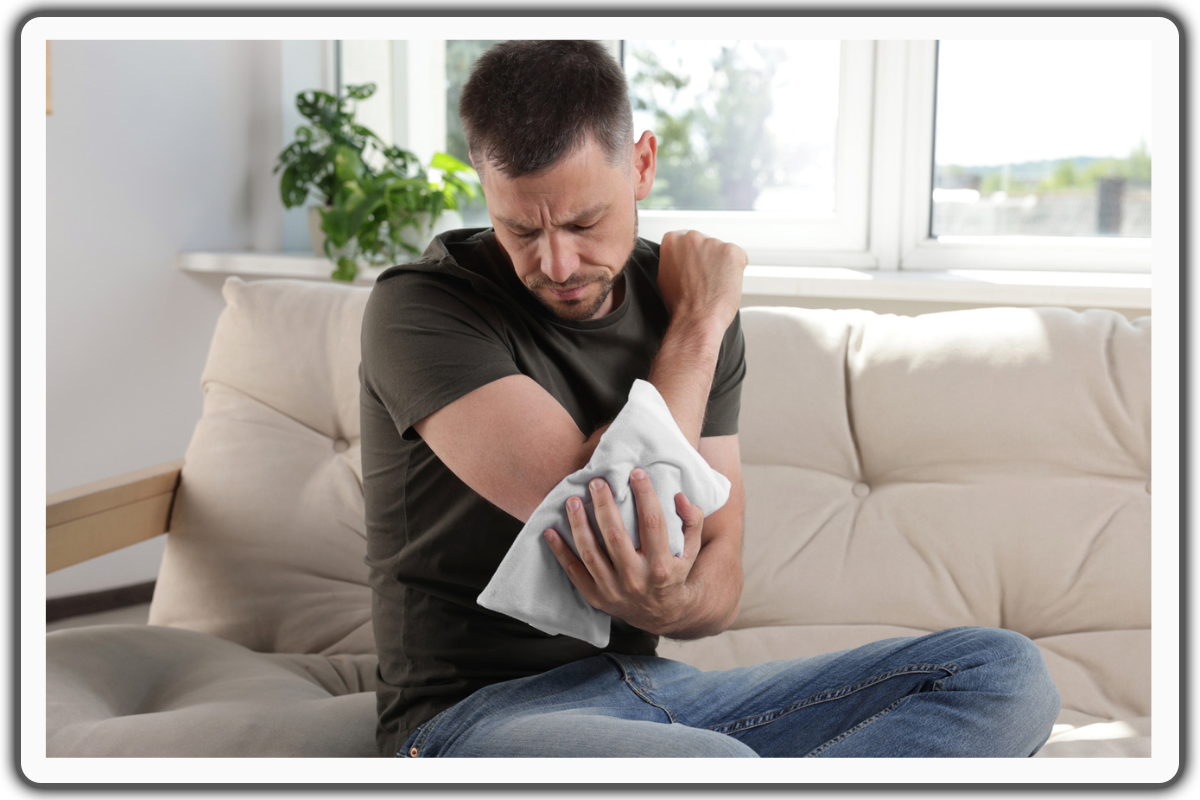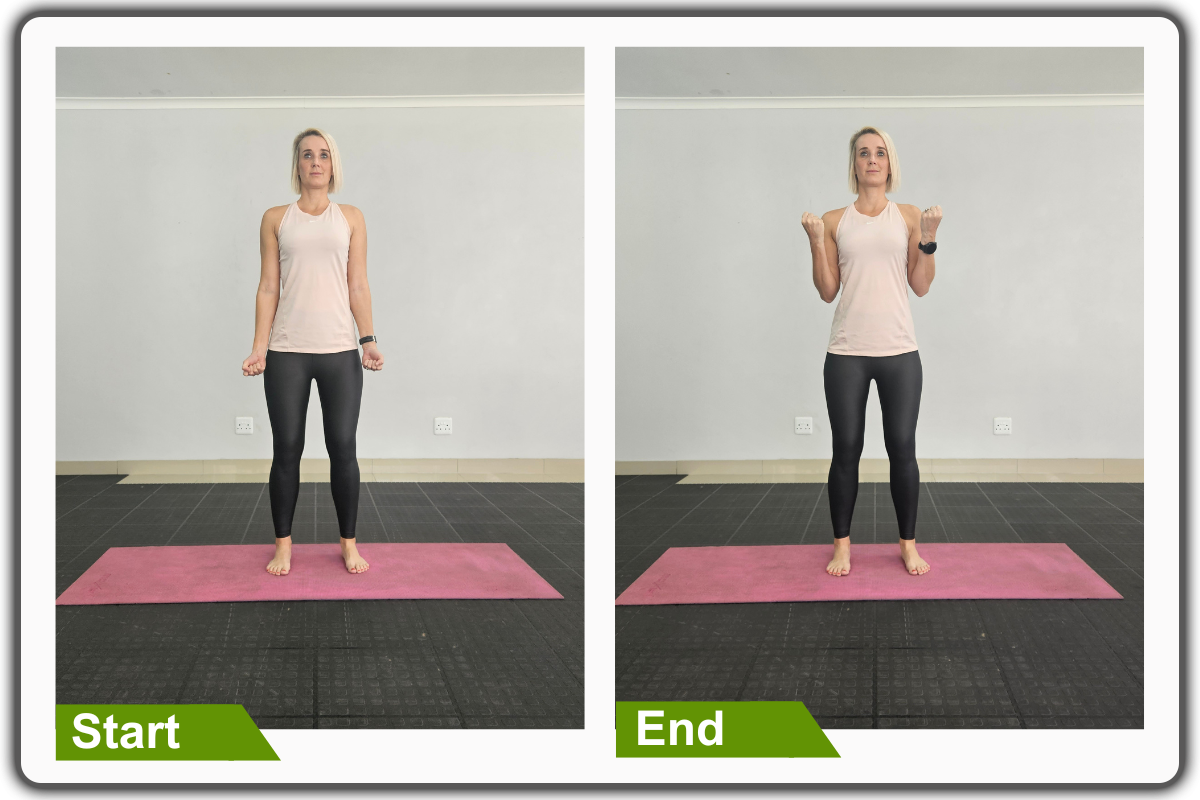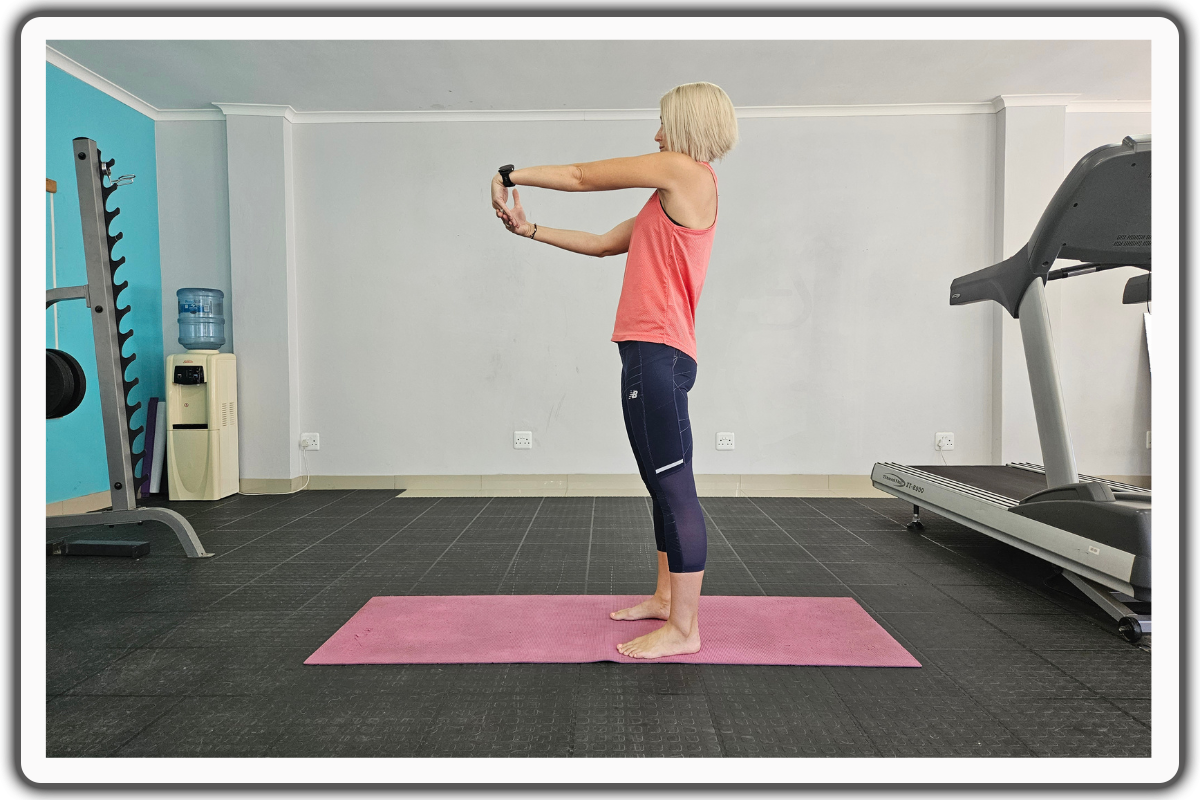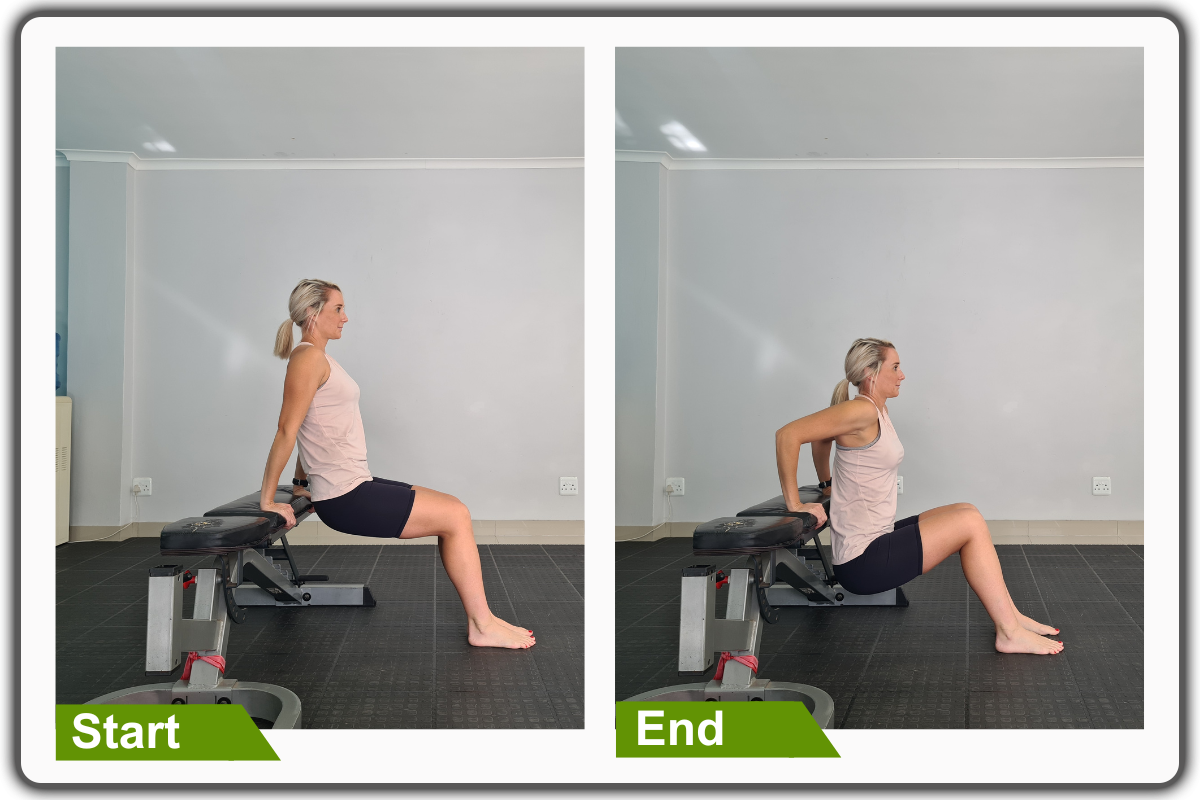
Elbow Pain Treatment At Home: Natural Ways to Find Relief
Elbow pain is most common in adults between 30 and 60. It is typically not life-threatening, but it needs your attention. So, if you’re seeking relief from the discomfort without taking medication or expensive treatments, you’ve come to the right place.
This article will guide you through how to find relief with elbow pain treatment at home. Whether you're dealing with tennis elbow, golfer's elbow, or general joint discomfort, you can try several effective remedies and self-care techniques.
Elbow Pain: Causes and Symptoms
Before exploring natural treatment options, it's crucial to understand the underlying causes and symptoms of elbow pain.
Common Causes:
Tennis Elbow (Lateral Epicondylitis) is the overuse of forearm muscles from repetitive motions like gripping, lifting, or twisting, especially when playing tennis.
Golfer's Elbow (Medial Epicondylitis) is a condition characterized by wrist flexion or gripping activities. It is often seen in golfers but can also result from various repetitive actions.
Arthritis and all its various forms, such as rheumatoid arthritis and osteoarthritis, lead to inflammation and joint degeneration.
Elbow Tendonitis is the inflammation or irritation of the elbow tendons caused by repetitive stress, such as sports or occupations requiring repetitive arm movements.
Common Symptoms:
Pain and Tenderness: Pain can manifest on the outer side of the elbow for the tennis elbow, the inner side for the golfer's elbow, or generally around the joint for arthritis and tendonitis.
Limited Range of Motion: Difficulty fully bending or straightening the arm, often accompanied by stiffness.
Weakness: Especially noticeable when gripping objects or performing tasks requiring forearm strength.
Swelling: Swelling around the elbow joint indicates inflammation, and it is commonly observed in cases of arthritis, tendonitis, or bursitis.
Instability: Sensation of the elbow joint being loose or unstable, particularly in ligament sprains or severe tendon injuries.
Numbness or Tingling: Numbness or tingling sensations may occur in the forearm, hand, or fingers, often indicating nerve compression syndromes like cubital or radial tunnel syndrome.
If experiencing persistent or severe elbow pain, seek professional medical advice for proper management and rehabilitation.
Natural Remedies for Relieving Elbow Pain
Natural remedies often relieve elbow pain, especially for mild cases, or as complementary approaches to conventional treatment. Below are a few natural remedies you might want to consider:
Rest and Activity Modification:
Rest is essential to facilitate the healing of injured tissues in the elbow. Minimizing or abstaining from activities that worsen the pain enables your elbow to heal without additional stress or harm. Activity modification involves adjusting your daily tasks or exercise routine to minimize stress on most elbow pain, promoting healing and preventing the worsening of the condition.
Ice Therapy:
Ice therapy, also known as cryotherapy, effectively reduces pain and inflammation in the elbow. It can help narrow blood vessels and minimize swelling in the area. Additionally, ice numbs the nerves in the affected area, providing temporary relief from pain. A barrier, like a cloth or a towel, between the ice pack and the skin is crucial to avoid ice burn.
Heat Therapy:
Thermotherapy, also known as heat therapy, involves applying warmth to the affected area to enhance blood circulation, relax the muscles, and relieve joint pain. Heat promotes the delivery of oxygen and nutrients to the injured tissues, aiding in the healing process. It is particularly beneficial for severe pain or stiffness. You can apply heat to the elbow using heating pads, warm towels, or warm baths.
Compression:
Compression therapy involves the application of mild pressure to the elbow joint using a compression bandage or elbow sleeve. Compression helps reduce swelling by preventing fluid buildup in the injured tissues. It also provides support and stability to the joint, alleviating pain and improving mobility. However, it's essential not to apply too much pressure, as excessive compression can impair circulation and cause further discomfort.
Elevation:
Elevating the affected arm above heart level helps reduce swelling by facilitating the drainage of excess fluid from the injured tissues. This position also helps alleviate pressure on the elbow joint, which helps to relieve pain and discomfort. Elevating the arm while resting or sleeping can promote faster healing and prevent worsening symptoms. You can use pillows or cushions to support the arm in an elevated position.
Physical Therapy:
Stretching exercises enhance flexibility and range of motion in the hinge joint of the elbow by lengthening tight muscles and tendons. Stretching can reduce stiffness and alleviate pain associated with tendonitis or arthritis. Strengthening exercises target the muscles around the elbow, including the forearm muscles and those that support the joint. Stronger muscles provide better stability and support to the elbow, reducing the risk of injury and improving overall function. Strengthening exercises can also help treat tennis elbow, a common condition affecting the outer part of the upper arm near the elbow joint.
These natural remedies are safe, cost-effective, and accessible options for managing elbow pain.
Exercises and Stretches for Strengthening the Elbow
Below are exercises and stretches tailored to enhance the muscles and flexibility in the elbow joint area:
Bicep Curls
For this exercise, use dumbbells or anything that has weight for added resistance.
Begin in an upright standing position with your feet hip-width apart, maintaining good alignment with your head, shoulders, hips, and legs. Place your hands at your sides with your palms curled into fists. Engage your core and curl your arms to bring your fists to shoulder level. Slowly lower your arms to the starting position and repeat the movement. Start with 1 set of 10 repetitions.

Wrist Extensor Stretch
Begin in an upright standing position with your feet hip-width apart, maintaining good alignment with your head, shoulders, hips, and legs. Extend one arm in front of your body at shoulder height. Looking for a light stretch in your forearm and wrist, lower your hand so that your palm faces your body and your fingers point toward the floor. Using your opposite hand, push the back of your hand to intensify the stretch. Hold this position for several deep belly breaths, in through your nose and out through your mouth. Relax and return to the starting position. Repeat the movement on the opposite side.
To make the exercise more challenging, spread your fingers while pointing them to the floor.

Tricep Dips
Begin in an upright sitting position on the edge of a stable chair or bench with your knees bent and feet flat on the floor, maintaining good alignment with your head, shoulders, and hips. Place your hands at your sides on the chair for support. Engage your core, lift your seat from the chair, and slowly lower your seat towards the floor. Using your arms, lift back up to the starting position and repeat the movement.

Lifestyle Changes to Prevent and Manage Elbow Pain
Making specific lifestyle changes can help prevent and manage elbow pain.
Avoid repetitive motions or tasks that overly stress your elbow. If your occupation or pastimes entail repetitive movements, ensure to take regular breaks and incorporate stretching exercises into your daily activities. Maintaining good posture and proper ergonomics is also important to avoid unnecessary stress on your elbow joint.
Also, practicing good self-care is essential for managing and preventing elbow pain. This includes getting enough rest and sleep, managing stress, and maintaining a healthy weight. Excess weight strains your joints, including the elbow, and can contribute to pain and inflammation.
Dietary Tips for Reducing Inflammation and Promoting Healing
Your diet can also significantly reduce inflammation and promote healing in your elbow, especially when complemented by nonsteroidal anti-inflammatory drugs (NSAIDs).
Including foods with anti-inflammatory properties in your meals can help alleviate pain and swelling. Some examples of anti-inflammatory foods include fatty fish like salmon and mackerel, leafy greens, berries, nuts, and olive oil. However, certain foods can contribute to inflammation and worsen your elbow pain, potentially counteracting the effects of NSAIDs. These include processed foods, sugary snacks, refined carbohydrates, and foods high in saturated fats.
Avoiding these foods can help reduce inflammation by promoting your body's natural healing process while enhancing the efficacy of NSAIDs.
Alternative Therapies for Elbow Pain Relief
Aside from natural remedies and lifestyle adjustments, alternative therapies offer relief from elbow pain.
Acupuncture, for example, involves inserting fine needles into precise locations on the body to promote pain relief and healing. This traditional Chinese therapy, practiced for centuries, is thought to activate the body's natural healing mechanisms.
Another alternative therapy to consider is chiropractic care. Chiropractors employ manual spinal manipulation and various methods to adjust the musculoskeletal alignment of the body, which can include addressing the elbow joint. This can help reduce pain, improve joint function, and promote overall well-being.
When to Seek Professional Help for Elbow Pain
While natural remedies can often provide relief for elbow pain, there are instances where professional help may be necessary.
If your elbow pain is severe, persists for more than a few weeks, or is accompanied by other concerning symptoms like fever or significant swelling, it's important to seek medical attention. A proficient healthcare professional can identify your condition and recommend appropriate treatment options precisely.
It's also crucial to consult a medical professional if your elbow pain results from a recent injury or trauma. Obtaining an accurate diagnosis is crucial for ensuring proper healing and preventing further damage.
Conclusion: Empowering Yourself with Natural Solutions for Elbow Pain Relief
Elbow pain can severely impact your daily functioning and quality of life. However, resorting to medication or expensive treatments is not always necessary. By exploring natural remedies, lifestyle changes, and alternative therapies, you can find relief from elbow pain safely and effectively. Listen to your body, seek professional help, and empower yourself with natural solutions for long-term elbow pain relief.
By taking control of your healing process and incorporating these natural methods into your routine, you can relieve elbow pain and enjoy a more pain-free and active lifestyle.
So, the next time you experience elbow pain, don't just reach for the painkillers. Try these natural remedies and take charge of your health and well-being. Your elbows will thank you!
